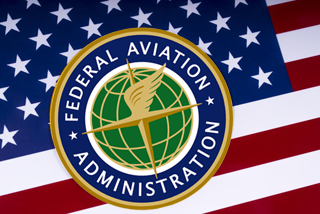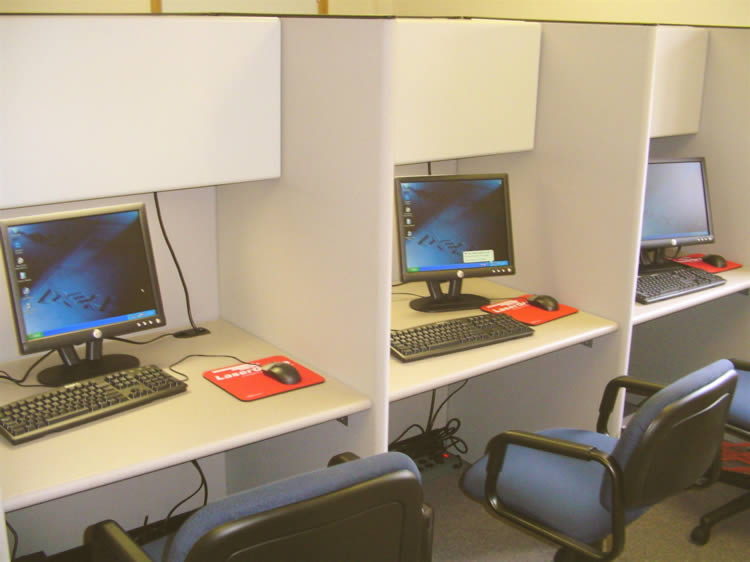
|
|
|

|
|
|
|
|
 Coronavirus Disease : The FAA publishes regulatory relief
Coronavirus Disease : The FAA publishes regulatory relief
Published by Orbifly on May the 3rd, 2020
Updated by Orbifly on June the 29th, 2020
On April 29th, the FAA has published a SFAR (Special Federal Aviation Regulation), that was then temporarily unpublished in order to be updated. Only the temporary document was available until yesterday.
However, it was made available again today on the Federal Register, with an official publication date on May the 4th, 2020. It's now available here on the Federal Register Online.
Please find here a colorized PDF version where we highlighted those parts that may be of interest for a great number of GA Pilots.
You will find below some key points extracted from the SFAR, but we invite you to read the original document carefully, especially for specific cases.
This SFAR was extended on June 29th, 2020, see the link below for more details. Most extensions go until Sept 2020, however, some relief have not been extended, such as CFI renewals. Check the page carefully, this link will direct you to a quick sum-up of most extensions:
https://www.federalregister.gov/d/2020-13960/p-51
|
|

|
✈ Flight review :
You know it : according to §61.56, no pilot may act as PIC of an aircraft unless he has accomplished a Flight Review (commonly known as "BFR", its former name) within the past 24 calendar months.
The FAA extended this 24 calendar month requirement by 3 calendar months for those pilots who were current to act as PIC in Marchx 2020 and whose Flight Review was due between March 2020 and September 2020, under certain conditions.
To be eligible for this 3 month extension, the pilot :
- was current to act as PIC in March 2020
- has a Flight Review that is due from March 2020 to September 2020
- must have logged at least 10 hours of PIC time within the twelve calendar months preceding the month the flight review was due.
In addition, eligible pilots will need to complete FAA Safety Team online courses totaling at least three WINGS credits.
Never heard of the "Wings Program" ? Then it's a good time to find out !
The Wings Program story started in 1996 with the FAA Pilot Proficiency Award Program, then was updated in 2007.
The objective of the WINGS Program is to address the primary accident causal factors that continue to plague the general aviation community. It's designed to help airmen improve their skills and knowledge as pilots, on a voluntary basis.
There are a lot of free online courses and very interesting ressources that allow the airmen to be awarded "Wings Credits" and to complete "Wings Phases".
All you have to do is create a free account, login, and start !
You can visit the FAA Safety Team website here, and read some further explanations here.
|
|

|
Once your "Wings Credits" are obtained online, you're done, there is no further requirement nor any additional paperwork required with the FAA.
Note : The courses on the FAA Safety Team website must have been completed in January 2020 or later to meet this requirement.
✈ Recent Flight Experience : Carrying of passengers & IFR Flights
§61.57 contains the recent flight experience requirements to serve as a PIC in an aircraft under various conditions, including the recency requirements for carrying passengers during day and night operations and operations under instrument flight rules (IFR).
If you hold an FAA Pilot Certificate, you certainly know the rules that apply to you in order to carry passengers (landings within the last 90 days) as well as the recent experience required to fly IFR as PIC (6 instrument approaches, holding procedures and tracking/intercepting within the past 6 calendar months).
The FAA made the decision not to provide any exemption to the existing rules towards the carrying of passengers. So be very careful, prior to your first flight after the lockdown, to be current on that matter. If not, you'll need first to fly single on board in order to retrieve this experience and carry your passengers.
However, the FAA has warranted relief for instrument flying.
The FAA is extending the six calendar month requirement of §61.57 by an additional 3 calendar months. This will enable a pilot to continue exercising instrument privileges, provided the pilot has performed the required tasks within the nine calendar months preceding the month of the flight, instead of the preceding six calendar months.
To be eligible for the relief, a pilot will need to :
- have logged at least 3 approaches in the preceding 6 calendar months
- These approaches must comply with the usual requirements, which means they will be valid only if done in actual weather conditions or under simulated IMC (view-limiting device + safety pilot)
Important :
Eligible pilots may exercise the relief in this SFAR through September 30, 2020. After that date, a pilot must be current in accordance with § 61.57(c). The usual 6 month grace period to reestablish instrument currency will not take any extension into account.
Also pay attention to the fact that passenger carrying currency and instrument currency are two separate requirements : being current to fly IFR as PIC does not necessarily means you are current to carry passengers.
FAQ : Yes, all approaches you may have performed on a non-N Reg airplane or under a non-FAA instrument rating do count towards you FAA instrument currency, as long as the requirements are met (which means flown under actual IMC or simulated IMC). Whatever the airplane registration or the license issuing authority, this is part of your overall pilot experience.
✈ Proficiency Check for turbojet or multicrew aircraft
§61.58 requires a PIC proficiency check for those pilots that fly an aircraft that requires more than one pilot flight crewmember or is turbojet-powered.
A pilot must complete such Proficiency Check on a type he is rated at least every 12 calendar months, and in addition to that requirement, he needs to complete such proficiency check on each type he is rated at least every 24 calendar months (for those pilots rated on multiple types).
The regulation establishes a "Grace Month" for completing the PIC Proficiency Check. It allows the check to be completed in the month prior to or the month after the month in which the check is due.
The FAA decided to allow two additional grace months for completing the PIC proficiency checks required.
Eligible pilots :
- are those pilots whose base month falls between March 2020 and September 2020
- must comply with the regs of §61.57 whenever applicable (carrying of passengers and instrument currency)
- must have reviewed, within the previous 3 calendar months preceding the month of the flight, the following for each specific aircraft type for which PIV privileges are required:
a. Operational procedures applicable to the powerplant, equipment, and systems.
b. Performance specifications and limitations.
c. Normal, abnormal, and emergency operating procedures.
d. Flight manual.
e. Placards and markings.
Pilots will have a total of three calendar months after the base month to accomplish the PIC proficiency check required by §61.58(a)(1) and (2) (12 month requirement and 24 month requirement).
✈ Validity of knowledge tests
With the exception of the multiengine airplane ATP knowledge test, all FAA knowledge tests are valid for 24 calendar months iaw §61.39.
The FAA is extending the validity of knowledge tests by a duration of 3 calendar months for those tests expiring between March 2020 and September 2020.
This extension will then apply to those airmen who passed their knowledge test between March 2018 and September 2018.
While this SFAR will allow certain individuals to use an expired knowledge test, all other requirements in part 61 will remain and ensure the individual is prepared for the practical test including the requirement for the applicant to have received flight training from an authorized instructor in preparation for the practical test within the two months preceding the month of the test.
|
|

|
✈ Validity of medical certificates
On April 1, 2020, the FAA published an Enforcement Policy for Expired Airman Medical Certificates in the Federal Register (85 FR 18110) notifying the public that the Agency would not take legal enforcement action against any person serving as a required pilot flight crewmember or flight engineer based on noncompliance with medical certificate duration standards. The policy is limited to specified certificate expiration dates and to operations within U.S. airspace.
The FAA has determined that it is not appropriate at this time to maintain the requirement of an FAA medical examination, which is a non emergency medical service; therefore the FAA is now incorporating the relief granted in those exemptions into this SFAR and expanding it to all pilots.
All medical certificates that expire from March 31, 2020 and May 31, 2020 have a validity period extended to June 30, 2020.
UPDATE :
Extend medical validity period by 3 calendar months from expiration applies to medicals expiring March-Sept 2020.
IMPORTANT
The provisions of this SFAR do not extend to the requirements of §61.53 regarding prohibition on operations during medical deficiency. Which means you cannot use the provision of this SFAR to extend the validity of your medical if you know or have reasons to know that your medical condition or current medication is not compatible with your flying activity.
|
|

|
Don't forget also that your FAA medical does not mention an expiry date but only the date of the medical examination. You will have to determine your validity period on the basis of your age on the day of the examination.
As a reminder, whatever medical you hold (First, Second or Third Class medical), you are granted 24 calendar months for operations requiring a third class medical certificate if the airman is age 40 or over on or before the date of the examination, or 60 calendar months for operations requiring a third class medical certificate if the airman has not reached age 40 on or before the date of examination.
Operations requiring a third class medical : this is what you need for private flights.
✈ All United!
We hope that this summary will have helped you in reading this SFAR, and we invite you to consult the original version for all the detailed provisions it contains.
This page detailed some items, but please reference the full text of the SFAR for detailed guidance, and for areas of special operations, including those for technicians, crew members, remote-piloted aircraft operators, etc.
Orbifly remains available to assist you, don't hesitate
to contact us with any question!
Also be aware that the FAA maintains a webpage of news related to COVID-19, which may be of interest for you to remain updated on the latest decisions taken in connection with the situation.
|
|
|
|

|
|

|
|

Sky is no longer the Limit
|
|

Reload page
|





